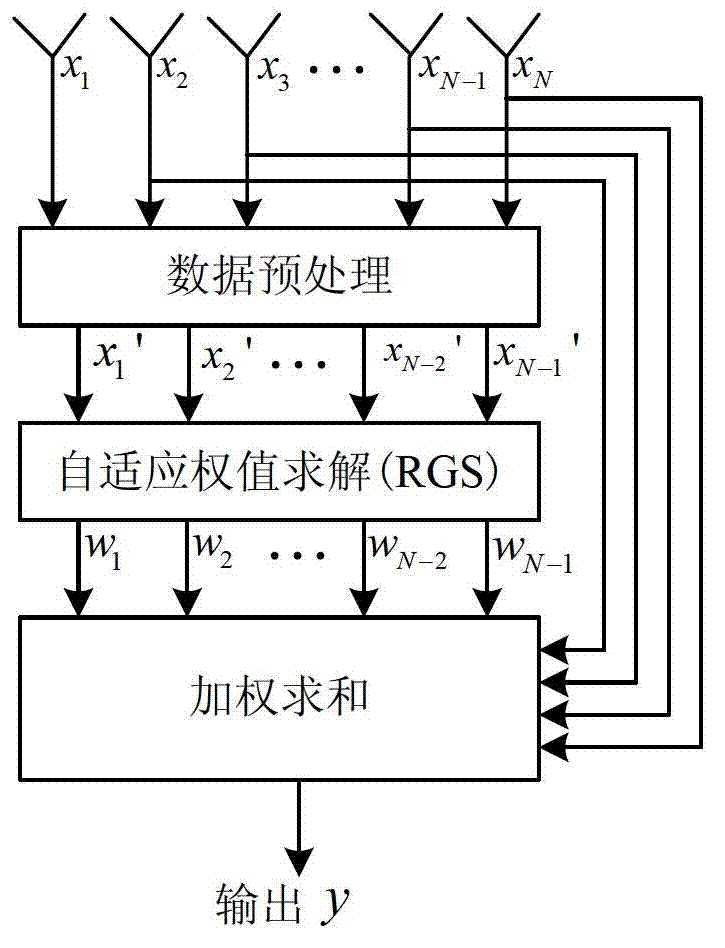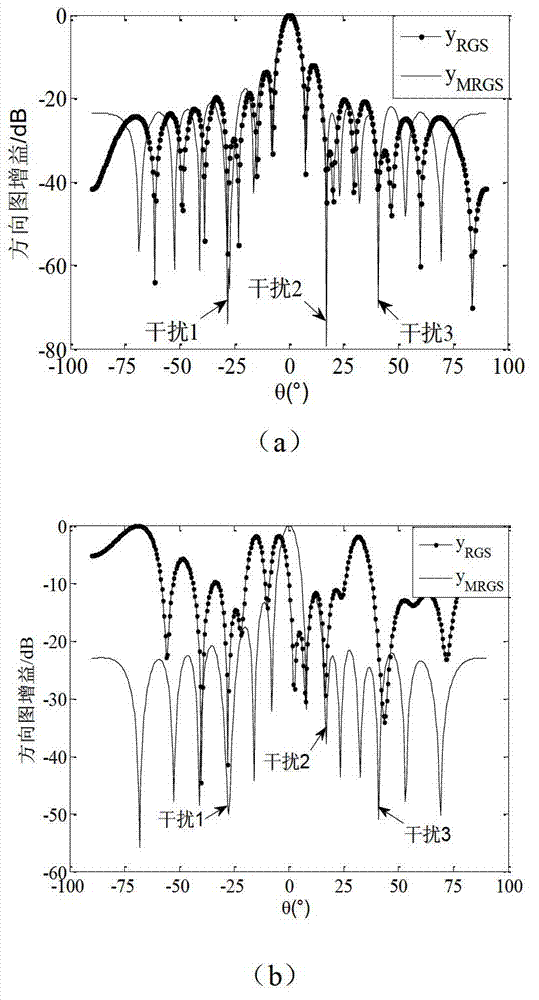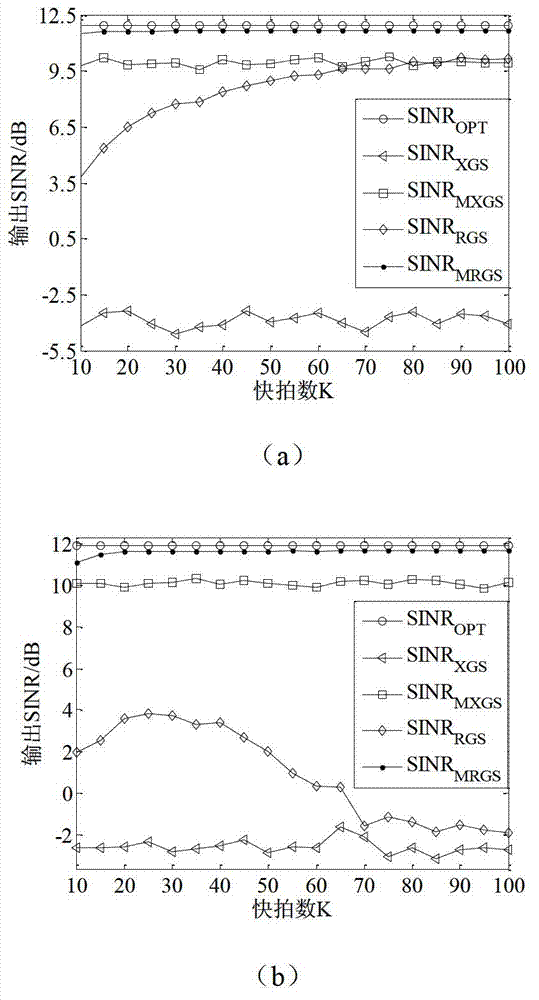Data preprocessing based covariance matrix orthogonalization wave-beam forming method
A technology of covariance matrix and data preprocessing, used in radio wave measurement systems, instruments, etc.
- Summary
- Abstract
- Description
- Claims
- Application Information
AI Technical Summary
Problems solved by technology
Method used
Image
Examples
Embodiment
[0119] In order to verify the improved RGS algorithm proposed by the present invention, beamforming and output SINR simulations are performed, and the simulation parameters are shown in Table 1.
[0120]
[0121] Note: "OPT" in the following simulations represents the adaptive weight vector obtained under ideal conditions, "XGS" represents the adaptive weight vector of the conventional array received data vector orthogonalization (XGS) algorithm, and "MXGS" represents the data pre-set The processed adaptive weight vector of the improved XGS (MXGS) algorithm, "RGS" indicates the adaptive weight vector calculated by the conventional RGS algorithm, and "MRGS" indicates the improved RGS (MRGS) algorithm of the present invention.
[0122] figure 2 It is a comparison chart of the improved RGS (MRGS) algorithm of the present invention and the conventional RGS algorithm adaptive direction diagram. In the simulation, there are 1 desired signal and 3 interference signals, and the in...
PUM
 Login to View More
Login to View More Abstract
Description
Claims
Application Information
 Login to View More
Login to View More - R&D
- Intellectual Property
- Life Sciences
- Materials
- Tech Scout
- Unparalleled Data Quality
- Higher Quality Content
- 60% Fewer Hallucinations
Browse by: Latest US Patents, China's latest patents, Technical Efficacy Thesaurus, Application Domain, Technology Topic, Popular Technical Reports.
© 2025 PatSnap. All rights reserved.Legal|Privacy policy|Modern Slavery Act Transparency Statement|Sitemap|About US| Contact US: help@patsnap.com



